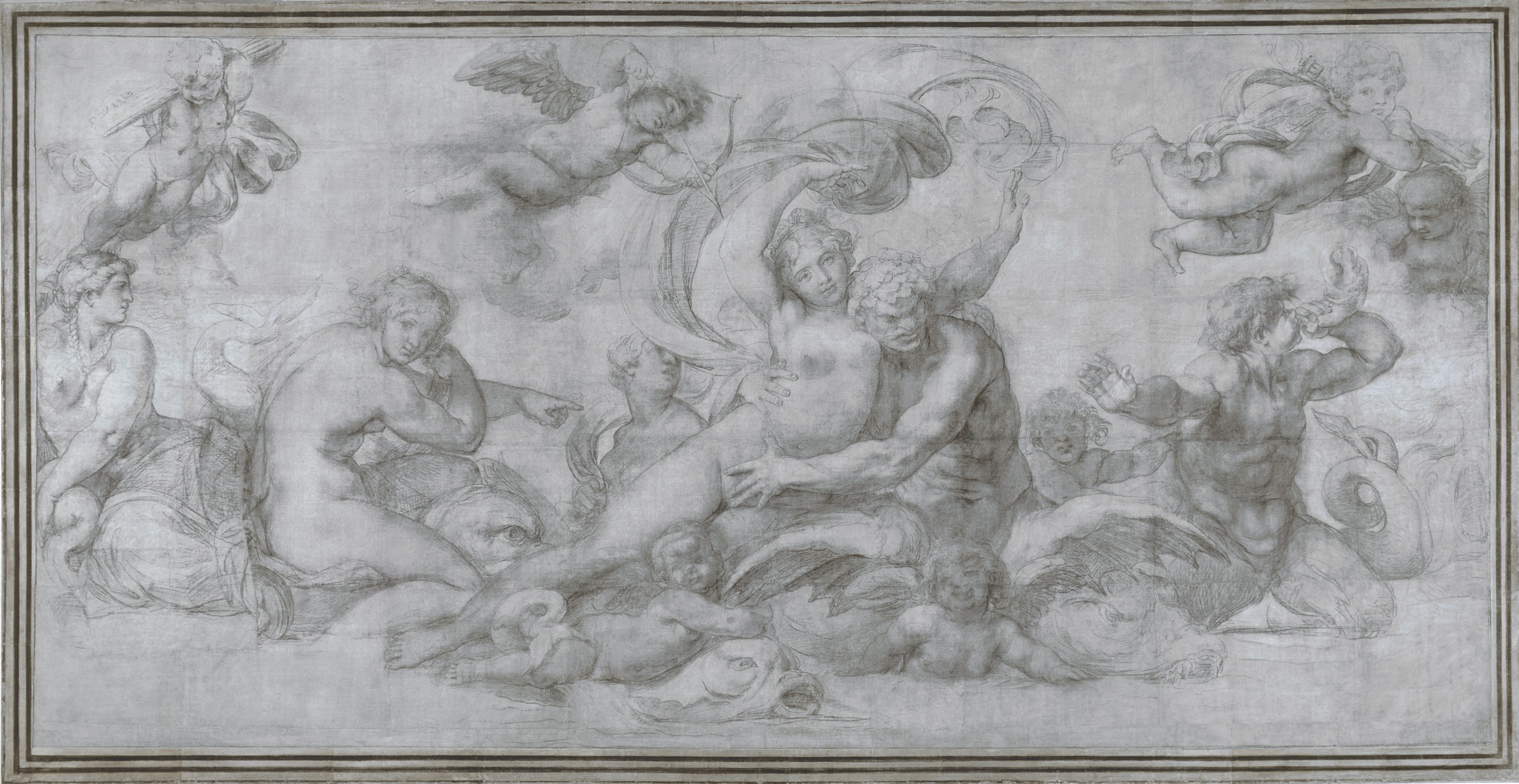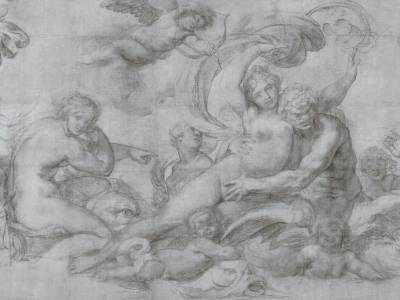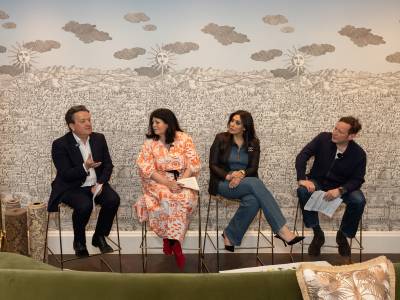The National Gallery opens a portal to over four centuries ago with the rare unveiling of the Carracci Cartoons (c. 1599), two monumental drawings by the pioneering Agostino Carracci (1507-1602), likely with assistance from his younger brother, Annibale Carracci (1560 - 1609). These works, nearly four metres wide and two metres high, are among the largest surviving cartoons from the era and are rarely seen due to their sheer scale and fragility.
Myths in the Making: The Carracci Cartoons at The National Gallery
24th April 2025
A world of myth and artistry awaits at The National Gallery this spring with the rare unveiling of the Carracci Cartoons. On display until July 6th, The Carracci Cartoons: Myths in the Making showcases monumental works by the Carracci brothers, created for the ceiling of Rome's iconic Palazzo Farnese, which bring ancient myths to life in stunning detail and scale.

Alive with mythical sea creatures, gods and goddesses, putti and crashing waves, the Carracci Cartoons reflect the inspiration the brothers found in Rome’s sculptures and the works of Michelangelo and Raphael. Preserved due to their artistic significance, they were part of Sir Thomas Lawrence's collection and entered the National Gallery’s collection in 1837 as a gift from Lord Francis Egerton.
In Renaissance and Baroque terminology, a "cartoon" refers to a full-scale drawing used to guide the creation of large-scale artworks, such as frescoes or tapestries. Many were discarded after use, making the Carracci Cartoons' survival and recognition even more remarkable.
These two cartoons were created as a preparatory step for the painted ceiling in the gallery of one of Rome’s most prestigious Renaissance palaces, Palazzo Farnese. The commission for the then-private residence, which now serves as the French embassy in Rome, was secured by the recently elected Cardinal Odoardo Farnese (1573-1626), the younger son of the Duke of Parma. Odoardo inherited the palace in 1592 and sought to redecorate it. The Carracci brothers, originally from Bologna, visited the cardinal in Rome in 1594.

The cartoons for the commission would form Loves of the Gods. This detailed and carefully crafted cycle explores the theme of love through allegorical figures and myths from ancient mythology, drawing inspiration from scenes in Ovid's Metamorphoses, which gained popularity during the Renaissance following its Italian translation. The works are rendered in charcoal and white chalk on paper and were later applied with a grey wash. The frescoes that adorn the Farnese ceiling have been compared to other monumental works of the period, such as Michelangelo's ceiling in the Sistine Chapel and Raphael's frescoes in the Vatican.
In Cephalus carried off by Aurora in her Chariot, a dramatic myth of unrequited love unfolds. Drawn from The Tale of Cephalus and Aurora in Ovid’s Metamorphoses (7:701-714), the drawing depicts Aurora, goddess of the dawn, as a forceful and determined woman as she leans into Cephalus, a mortal hunter she has fallen in love with. Cephalus, who is already in love with the daughter of the king of Athens, Procris, is shown to resist Aurora. In the bottom left of the work, Cephalus’ hound and spear lie on the ground, while in the centre, Cupid is shown to throw rose petals on the couple.

The Woman Borne Off by a Sea God (?) is believed to be entirely the work of Agostino. Unlike Cephalus Carried Off by Aurora in Her Chariot, the exact subject of this cartoon remains uncertain, and there are several notable differences between the cartoon and the final fresco. The cartoon features putti, sea gods, dolphins, sea nymphs, and various mythological marine creatures. At the centre of the scene is a couple: a naked woman being lifted by a muscular sea god with dragon-like wings, while Cupid aims an arrow at them.
The process of transferring cartoons onto a ceiling was a delicate, arduous task. In Cephalus carried off by Aurora in her Chariot, the cartoon was moved after being cut into sections, each one being applied to fresh plaster. Incisions were made onto the plaster using a stylus in single sessions to avoid the joins being visible in the final painting.

In the Woman Borne off by a Sea God, the cartoon was transferred through picking, which involved pricking small holes into the outline of the design and then shaking coloured chalk over it to leave marks on the plaster. The design was subsequently traced onto a secondary cartoon positioned behind the original, allowing both layers to be pricked simultaneously. This replica was then cut into smaller segments to facilitate the application of the design to the ceiling.
Agostino Carracci became one of the most admired painters of his time and was imperative to the founding of the Baroque style. The rare opportunity to witness the foundation for one of the most renowned frescoes in the world at the National Gallery can’t be missed. The cartoons leave you with a lasting impression not only due to their sheer size and exceptional draughtsmanship, but also a profound appreciation for the creative process behind the two works and the art of preservation itself.
The Carracci Cartoons: Myths in the Making is exhibited on public display at The National Gallery from 10th April – 6th July 2025






